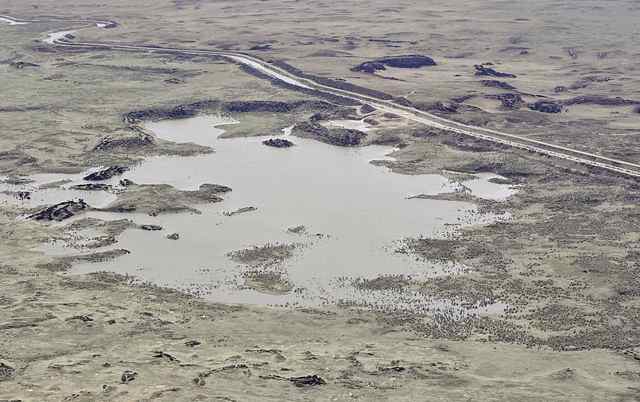forum
library
tutorial
contact

Idaho Water Resources Molding
Strategic Aquifer Plan
by Carol Ryan Dumas
Capital Press, June 25, 2014
|
the film forum library tutorial contact |

|
Idaho Water Resources Molding
by Carol Ryan Dumas
|
Idaho Department of Water Resources is working on a strategy to stabilize aquifers statewide with the $5 million
a year allocation approved this year by the state Legislature. The Eastern Snake Plain aquifer is the first priority.
 SUN VALLEY, Idaho -- The Idaho Department of Water Resources has to figure out how to accomplish statewide aquifer stabilization, now that it is receiving $5 million annually from state cigarette tax money.
"We now have the money, but the sobering reality is how to get this done," said IDWR Planning Bureau Chief Brian Patton during the Idaho Water Users Association's summer water law seminar in Sun Valley on Monday.
SUN VALLEY, Idaho -- The Idaho Department of Water Resources has to figure out how to accomplish statewide aquifer stabilization, now that it is receiving $5 million annually from state cigarette tax money.
"We now have the money, but the sobering reality is how to get this done," said IDWR Planning Bureau Chief Brian Patton during the Idaho Water Users Association's summer water law seminar in Sun Valley on Monday.
The annual allocation comes from a portion of the existing cigarette tax of 57 cents per pack previously used for the restoration of the state capitol. That restoration has been paid off, freeing up funds for water and highways, he said.
The Eastern Snake Plain Aquifer (ESPA) has declined 12 million acre feet since 1952.
Average storage loss averages 200,000 acre feet a year, and average annual recharge since 2009 is only about 74,000 acre feet, which makes the ESPA the Department's first priority, he said.
ESPA is the only aquifer IDWR has a game plan for, but needs also exist in the Big Wood, Mountain Home, Palouse, Treasure Valley, and Rathdrum aquifers and possibly others, Patton said.
Managed recharge is a focal point for the ESPA, driven by a number of water delivery calls by senior right holders with the potential to dry up acres, reduce supplies to municipalities and cause economic harm to farmers and local economies, he said.
An even bigger issue is meeting the downstream flow requirements in the Swan Falls Agreement between the state and Idaho Power. The state is obligated to ensure 3,900 cubic feet per second during the irrigation season and 5,600 cubic feet per second in the off season at Murphy Gage just below Swan Falls Dam, he said.
The state has come close to breeching minimum flows at different points in the irrigation season when flows at Milner Dam are at zero, leaving flows for Swan Falls to rely almost entirely on spring flows from the ESPA, he said.
The goal of the Idaho Water Resources Board is to stabilize ESPA through recharge, ground water to surface water conversions, demand reductions through conservation programs, and cloud seeding, he said.
Where recharge is concerned, location matters for water availability and retention in the aquifer. The best water availability is in the Minidoka to Milner reach, but there are only four diversion points in that reach and a lack of infrastructure to take advantage of water availability, he said.
The general strategy is to capture winter-time flows spilling over Milner Dam as a base load for recharge, but it will take additional and dedicated diversions below the reservoir system. The plan also includes utilizing lower valley canals and off-canal facilities, to the extent available in any given year, to help catch and divert spring run-off for recharge, Patton said.
The cost for dedicated pump-to-recharge projects to recharge winter spill at Milner would include $36 million in capital cost in a 10-year build-out and $2 million annually in operations and maintenance cost. But costs should be less and build-out shorter if an agreement can be reached with Milner canals users, he said.
The recharge plan also includes utilizing winter-time water supplies in the Little Wood River and above American Falls Reservoir in above-average water years. Facilities would be needed in both areas, he said.
The questions now are how to prioritize the other aquifers and spending in each aquifer and what type of management plan should be used for setting goals and accessing funds, he said.
The Department also needs to establish a method for communication, feedback and advice with key legislators, the governor's office, water users, and other stakeholders, and welcomes input on the best way to do that, he said. .
learn more on topics covered in the film
see the video
read the script
learn the songs
discussion forum
